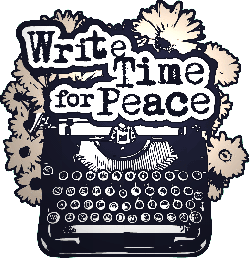It was spring 2005. I had just returned from three weeks with MPT in the West Bank and my feelings were raw as a result of what I had witnessed there. Shortly after returning home, I felt like I had been kicked in the stomach when the archdiocese abruptly announced that it was closing the small, inner-city high school where I had taught for the past decade.
Before I knew what had hit me, the indignities of checkpoints conflated with the injustices of the Church and I found myself seething with a red-hot rage, the severity of which caught me completely off guard.
Gandhi, be damned! I was hauling around a sack of resentments heavier than a day in Hebron. Bishops, Bush, and border guards. Settlers and suburban parishes. As I was quick to remind anyone unfortunate enough to cross my path that spring, the arc of injustice spanned from the Knesset to the Chancery and woe to any who would deny me my righteous outrage.
By summer, I was ready to cry and plant my garden. Ready to sit with a broken heart.
Grief, I think, is an integral part of peacemaking with great transformational possibilities that we too often overlook.
 We walk – with eyes open – in a world that is radically broken. How do we respond? Do we defensively harden our hearts, erecting walls as high and impenetrable as those in the West Bank, as a way of protecting ourselves from pain? Do we deny the pain in our hearts by engaging in compulsive behaviors in order to ward off the grief that we fear will overwhelm us? Do we succumb to cynicism, despair, rage, paralysis?
We walk – with eyes open – in a world that is radically broken. How do we respond? Do we defensively harden our hearts, erecting walls as high and impenetrable as those in the West Bank, as a way of protecting ourselves from pain? Do we deny the pain in our hearts by engaging in compulsive behaviors in order to ward off the grief that we fear will overwhelm us? Do we succumb to cynicism, despair, rage, paralysis?
Or do we summon the courage to simply sit with our grief and allow it to transform us so that we can work for peace from a place of humility and compassion?
Some carry their grief with grace. Some of us get there only after a fair amount of kicking and screaming and shaking our fists at the heavens. But get there we must if our work is to bear fruit.
In this respect we have much to learn from those whom we meet in the field. How else to explain the steadfastness, the dignity, the warmth of people who have suffered and lost so much? Working for peace with justice, literally, gets to “the heart of the matter” when it is authentic. When I recall the prodigious hospitality shown me by the families living in caves in the Hebron Hills, my heart breaks in a way I do not understand and cannot explain.
Who can understand the movements of the heart? It is a paradox, but it seems that the more we allow our hearts to break, the more they are able to hold. In fact, I think this is the place where the seeds of real peacemaking are sown. William Blake wrote that we are on this earth a little space, that we may learn to bear the beams of love.
These piercing “be ams of love” break open our hearts, and while it may really hurt, it’s the only way to let in the light.
ams of love” break open our hearts, and while it may really hurt, it’s the only way to let in the light.
When we allow ourselves to sit with grief, we come face to face – in a profound way – with our own powerlessness and pretentiousness. This frees us from attachments to predetermined outcomes and the need to define and achieve success in terms that are more a product of our egos than authentic peacemaking. This also frees us from being overly reliant on the intellect and the arrogant belief that we know what is best for the world.
While we engage our heads and hands in this work, our greatest gift to the world is a heart that is open to the pain of our sisters and brothers. Ironically, the sheer joy that is peacemaking is in exact proportion to the grief that we are willing to carry. This is the great mystery of peacemaking.
From the time I was a child, I have had a very low tolerance for injustice, whether it involved bullies in the school house or bullies in the White House. The outrage I felt in the spring of 2005 was the same hot anger I felt as a little kid when I saw classmates being picked on and friends’ older brothers coming home in wooden boxes from a war halfway around the world. Some of us, I think, are hardwired in such a way that a desire for justice burns in our bones, and this can be both a blessing and a curse.
Anger has its place, but, ultimately, we must learn to sit with the grief so that something creative and life changing can take root. Once we learn to do this, peacemaking becomes irresistibly joyful.
This is the heart of peacemaking.
Michigan Peace Team Newsletter, Spring 2009

